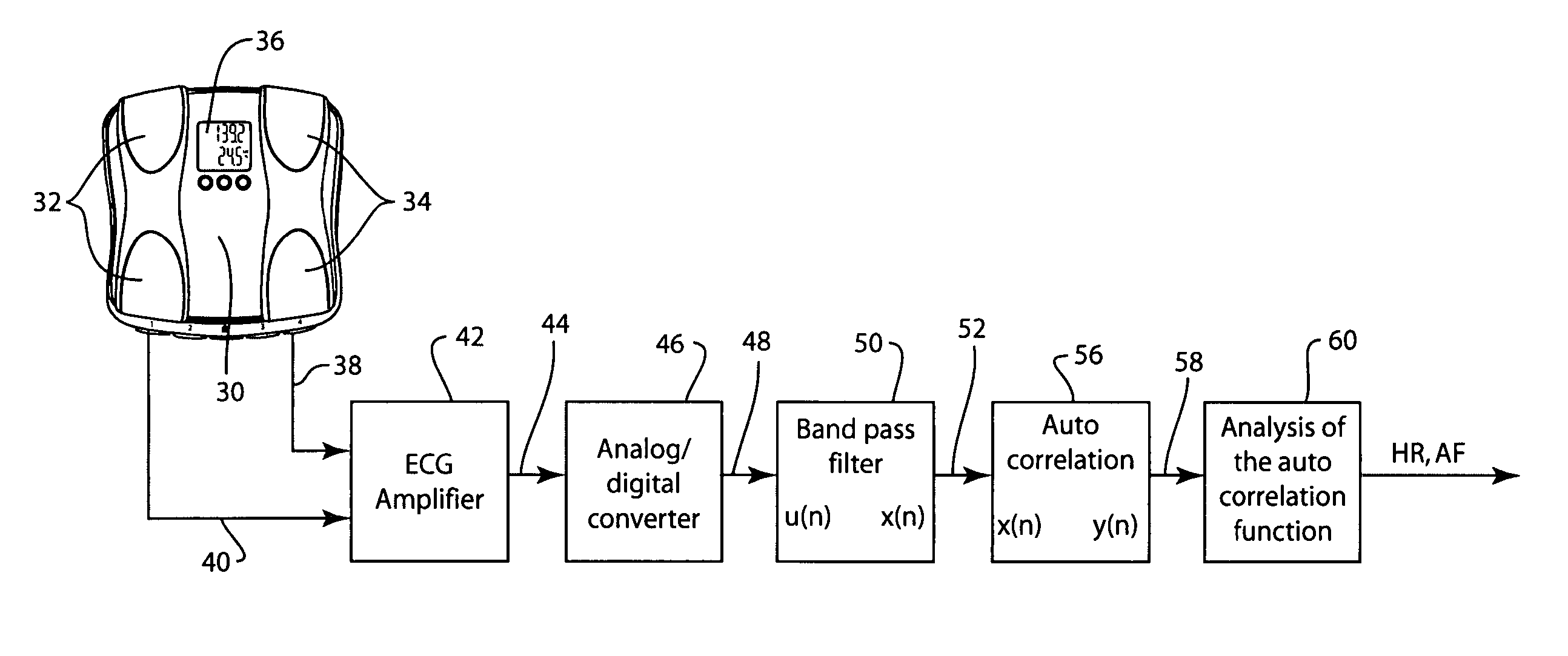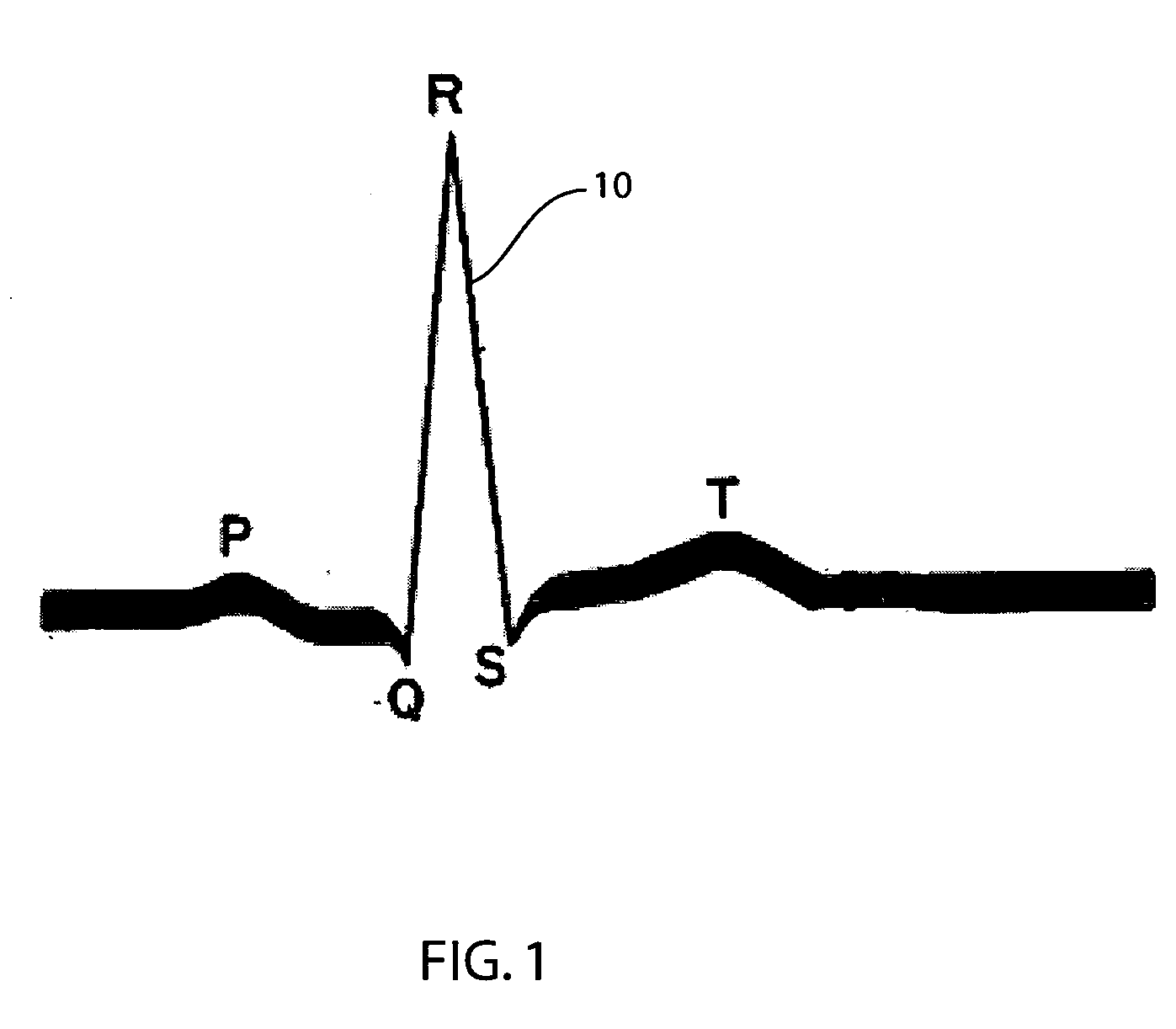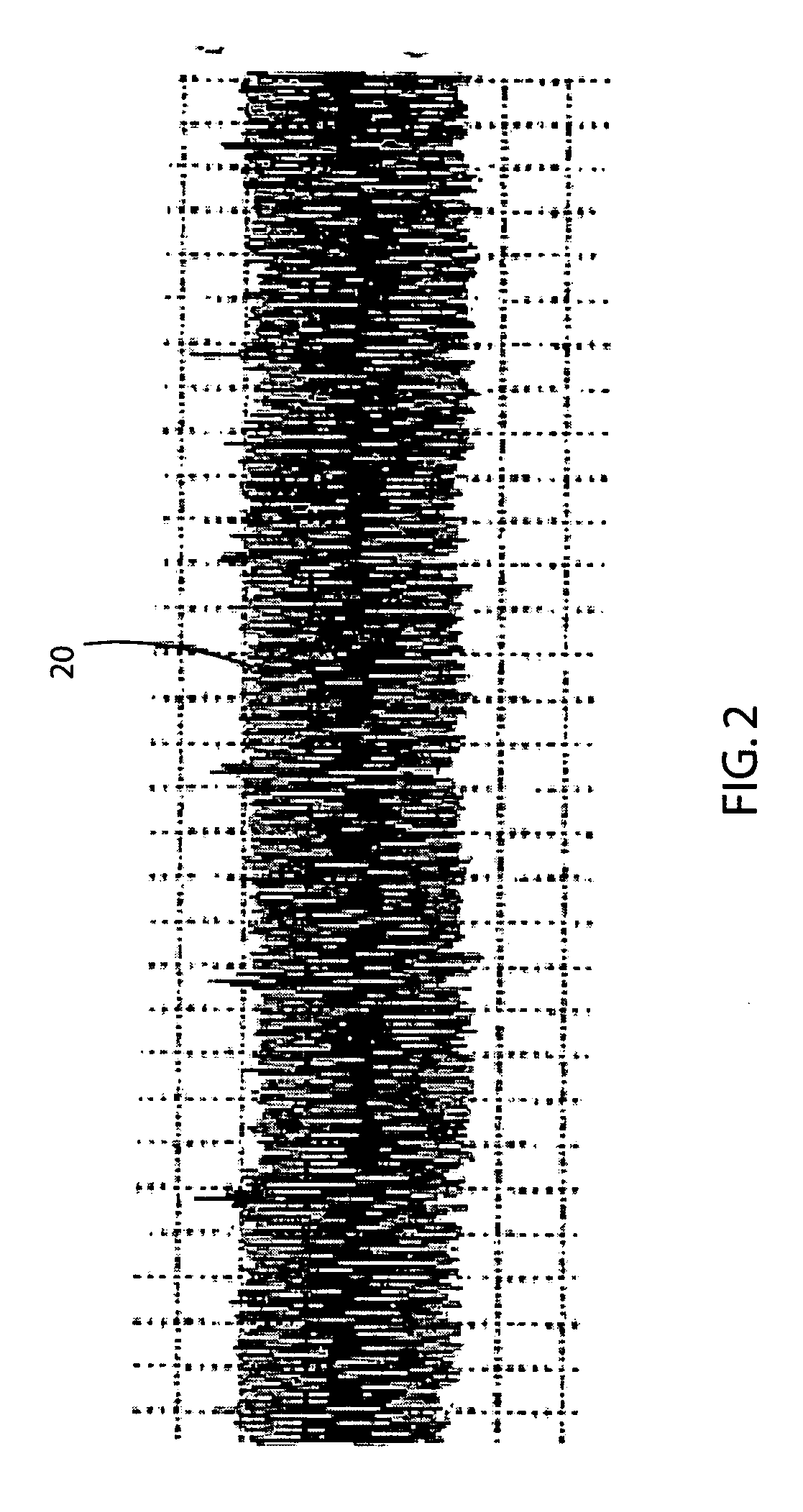Apparatus and method for obtaining cardiac data
- Summary
- Abstract
- Description
- Claims
- Application Information
AI Technical Summary
Benefits of technology
Problems solved by technology
Method used
Image
Examples
Embodiment Construction
[0018]FIG. 1 shows the electrical phenomena or signal 10 associated with a heartbeat, along with the conventional designations for its various components. An initial feature in the morphology of the signal is the P wave resulting from the contraction of the atria of the heart to commence the heartbeat. The major feature of the graph, the QRS complex, is followed by the contraction of the ventricles, and in turn, by the T wave indicative of a refractory period for the heart muscle at the end of the heartbeat. An electrocardiographic signal 10 of the type shown in FIG. 1 is ordinarily obtained by electrodes applied to the chest and extremities of a person.
[0019]FIG. 2 shows a typical electrocardiographic signal 20 received from the feet of a person containing a small magnitude ECG signal and a considerable amount of electrical noise in the output from conductive footpads applied to the feet.
[0020]FIG. 3 shows apparatus for obtaining information about the heart from output signal 20 ...
PUM
 Login to View More
Login to View More Abstract
Description
Claims
Application Information
 Login to View More
Login to View More - R&D
- Intellectual Property
- Life Sciences
- Materials
- Tech Scout
- Unparalleled Data Quality
- Higher Quality Content
- 60% Fewer Hallucinations
Browse by: Latest US Patents, China's latest patents, Technical Efficacy Thesaurus, Application Domain, Technology Topic, Popular Technical Reports.
© 2025 PatSnap. All rights reserved.Legal|Privacy policy|Modern Slavery Act Transparency Statement|Sitemap|About US| Contact US: help@patsnap.com



